Transcendentalism and a Cup of Purple Water
Yukinori Maeda’s new installation Light Deposit (2008) occupies the heart of the space at the Center for Cosmic Wonder. It takes the form of a wooden cube interior with a door that connects it to an open air room.This outside area features an organised jumble of trestles, tables, mirrors and a set of items for preparing a drink.
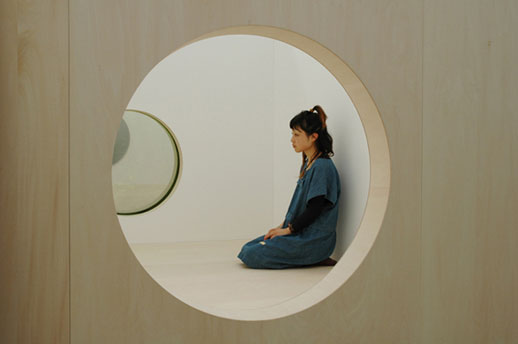
After wandering around this space for some time, I was eventually instructed by staff to take my shoes off and crawl into the interior space of the installation through a small circular hole. Inside, I was vaguely reminded of the sets Alejandro Jodorowsky designed for his visionary film The Holy Mountain (1973), which is submerged in pagan and spiritual iconography as it depicts one man’s spiritual search. The association became stronger as the experience became more surreal. Having spent some time staring into a circular mirror, I attempted to leave the installation, but the staff were blocking my exit. In confusion I tried again, but was told “omachi kudasai, mizu” (“please wait, water”).
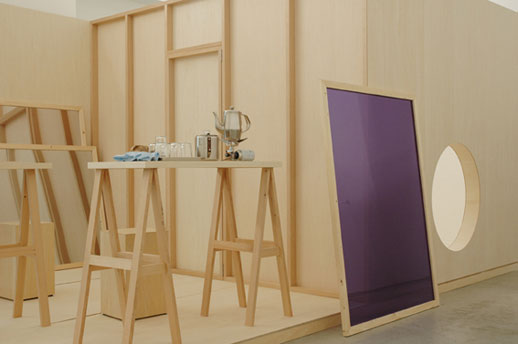
Held against my will, trapped and alone in Yukinori Maeda’s installation, I anxiously waited for my water. Outside I could hear the tinker of metal cups and the whoosh of a portable burner starting up as the gas caught alight. Finally a woman in a tunic appeared through a side door, offered me a cup of purple water and said “reflect your light”. Drinking the water was easy, reflecting my light was not. I felt like I was an actor involved a historical re-enactment of the 1978 Jonestown Kool-Aid incident.
“Light Construction” is the current show taking place at the Center for Cosmic Wonder in Aoyama. During this exhibition the space is being used to invoke the “positive light within us”. This kind of new age rhetoric may seem naîve, or facile, and brings to mind badly photocopied spiritual ‘literature’ from the late sixties to early eighties, when cults and new-age sects were most fully in bloom. But on the other hand, if taken sincerely, its simplicity makes it overwhelmingly challenging. How can we even hope to accurately define and characterise something as amorphous as “the positive light within us”?
Peacefully hiding in a backstreet, the Center for Cosmic Wonder sits as a vivid monument to the notion of a ‘hidden Tokyo’. As you pass through the spotless white facade, its feels like you are entering a kind of modernist ashram. The Center for Cosmic Wonder is explained as being a medium for expressing ‘the origin of all things, the origin of us’. Currently the contents of the center include clothing (the ‘Cosmic Wonder’ and ‘Cosmic Wonder light source’ labels) and the ‘Light Construction’ exhibition. In the past this space has been filled with photography, film screenings, music ceremonies, rocks, mirrors, and other natural detritus and events.
Guiding all of this is the artist Yukinori Maeda, represented by Taka Ishii Gallery, who thematically explores the nature of light. He exhibited one of his installations at the ‘Space for your future’ shown at the Museum of Contemporary Art, Tokyo, earlier this year. He most recently exhibited at Galerie Lafayette in Paris with other Asian artists as part of their ‘Mellow Fever’ exhibition.
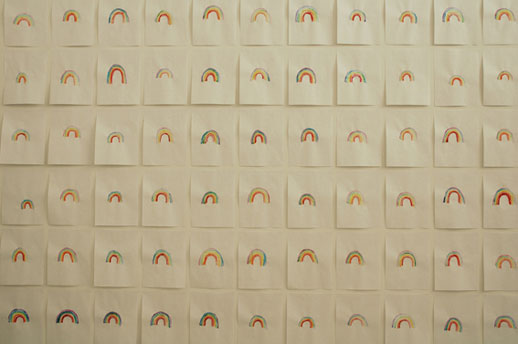
The other artists who are participating in this show are not only fine artists, but come from a variety of different fields. Mike Mills is a graphic designer and film director, who directed the recent movie Thumbsucker. Elein Fleiss works as an editor, writer and photographer and was founder of the literary magazine ‘Purple Journal’ (which is currently on hiatus). Yoshimio is one of the founding members the seminal experimental music group ‘Boredoms’, and also plays in a group known as ‘OOIOO’.
The idea for this show began in 2007 when Mike Mills, Elein Fleiss and Yoshimio all wrote short texts on the nature of light for a Cosmic Wonder project in 2007. These texts took the form of personal reflections, observations and quasi-philosophical ideas concerning the more abstract implications of light. Less concerned with its physical and scientific makeup, their writings are very similar to the way the American transcendentalist Thoreau used his observations of natural phenomena as a vehicle for discussing the more philosophical and spiritual aspects of the wider world.
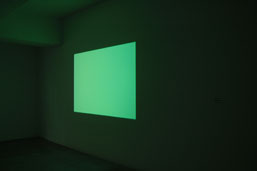
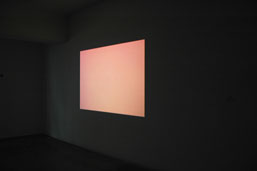
Elein Fleiss’ About Everyday (2008) is the first work you see as you enter the space and consists of a series of photographs shown as a slideshow projection in the dark entrance hall. It is stated that these photographs are all taken from her everyday life. However, rather than images showing the rituals and events of her daily life, the images show serene and beautiful natural scenes; such as sunlight wafting through a forest. Enigmatically, these settings are interspersed with projections of pure colour.
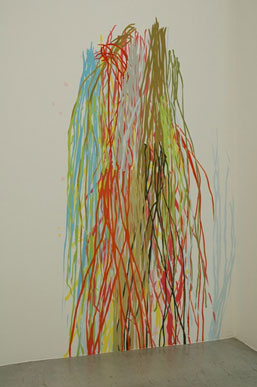
Some have claimed that the works under the ‘Cosmic Wonder’ umbrella are vacuous. I would not entirely disagree. But I don’t think this is necessarily due to a lack of meaning, or a lack of focus. Perhaps it is because the creators are searching for something that approximates ‘nothingness’, an attempt to strip the work of vivid and concrete associations in the hope of reaching out to something closer to a sense of ‘everything’, or the infinite.
It appears that Yukinori Maeda has attempted to deify light itself. His works, and the works of the others in this show, are part of a progressive discovery and worship of that deity. But this kind of attempt to explore a pantheistic vision of all things — nature and God part of ‘one extended substance’ — is ambitious and troublesome. What interests me most about these works is the degree to which their ‘attempts’ come close to achieving something concrete in the face of such evidently amorphous aspirations. At times ‘Light Construction’ felt like a fascinating exercise in cult aesthetics. It evoked a world where doing something like painting ninety-six rainbows for one’s own therapeutic pleasure, or drinking purple water was not only seen as an artistic ritual, but as a genuine celebration of spiritual power.
Cameron McKean
Cameron McKean



